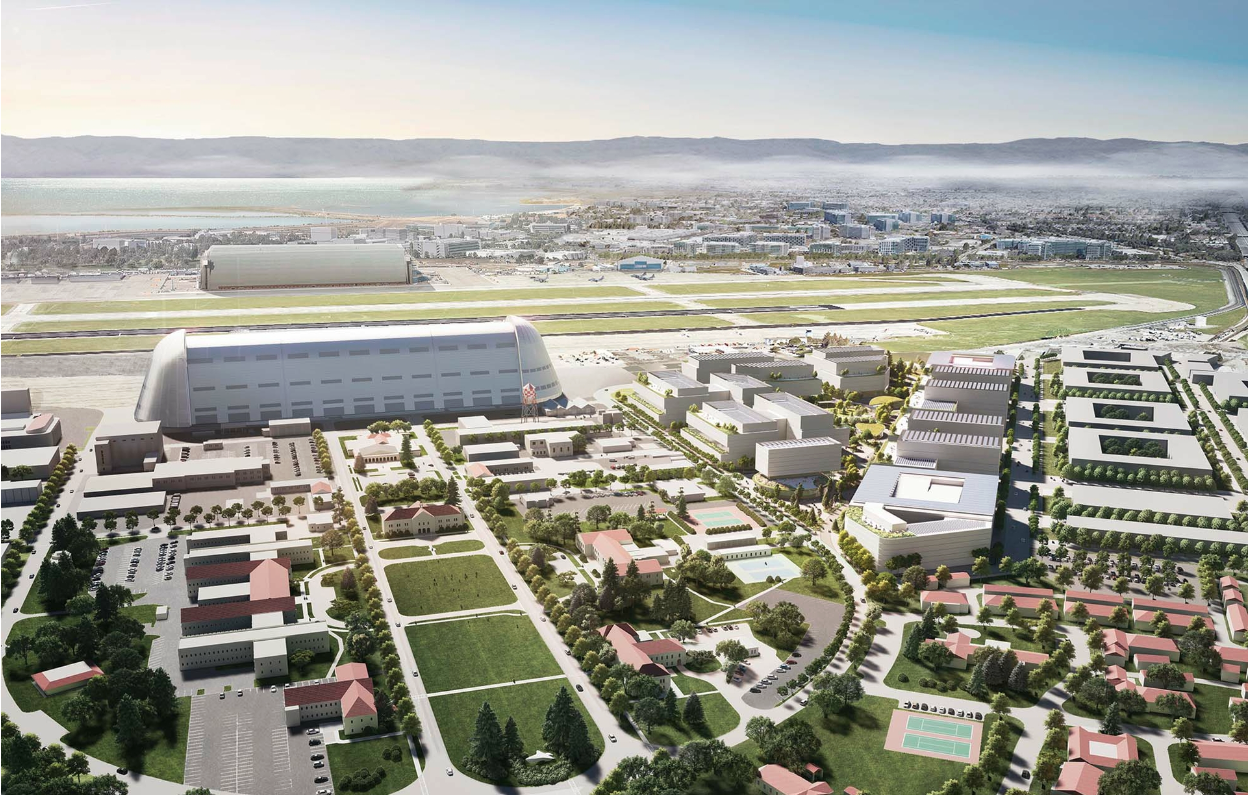
The University of California at Berkeley, in collaboration with SKS Partners, has announced the inauguration of a cutting-edge $2 billion research and development center located within NASA’s Ames Research Center.
Named the Berkeley Space Center at NASA Research Park, this visionary project is slated to be established at Moffett Field in Mountain View, California. Spanning 36 acres on the former Moffett Field air base, the center will harness the wealth of innovation in the San Francisco Bay Area. Its primary goal is to generate 6,000 employment opportunities. Go Bears!
SKS Partners, headquartered in San Francisco, is a significant player in commercial real estate investment and development, boasting an extensive portfolio encompassing over 10.5 million square feet of office spaces, research and development facilities, medical offices, life sciences, mixed-use properties, and multifamily projects. This project has the potential to revitalize the Silicon Valley region.

Centered on fostering collaboration among the private sector, academia, and government agencies for space exploration, the Berkeley Space Center prioritizes interdisciplinary research and development. This joint venture is committed to identifying, nurturing, and launching groundbreaking innovations spanning astronautics, quantum computing, climate studies, and the social sciences.
The Berkeley Space Center will be designed as an inclusive environment that encourages the expansion of the frontiers of knowledge and the advancement of cutting-edge technologies. The initiative is expected to create significant employment opportunities, offering over 6,000 advanced research and development positions.
Governor Gavin Newsom expressed, “The Berkeley Space Center will spearhead the state’s space technology development by uniting leading space experts from academia, government, and industry to nurture novel technologies and breakthroughs.”
The proposed master plan for the Berkeley Space Center encompasses 1.4 million square feet of Class-A office and research and development spaces, wet and dry laboratories, conference facilities, academic structures, and retail amenities. Additionally, it integrates around 18 acres of open spaces, providing outdoor workspaces and a central green area for community gatherings and exhibitions. Future phases may include accommodations for short-term stays, student housing, and faculty residences.
The proximity of the Berkeley Space Center to NASA’s Ames Research Center confers numerous benefits, including access to world-class research and development facilities. NASA’s Ames Research Center is renowned for its research in aeronautics and exploration technology, boasting the world’s largest wind tunnel and advanced computing capabilities.
UC Berkeley Chancellor Carol Christ remarked, “We are excited about the potential for new collaborations that can accelerate the transformation of discoveries from our world-class research enterprise, spanning various disciplines, into inventions, technologies, and services that contribute to the greater good.”
The partnership involving UC Berkeley, SKS Partners, and the development team, which includes global design firm HOK and urban design firm Field Operations, aspires to establish the Berkeley Space Center as a global leader in innovation. This initiative aligns with UC Berkeley’s mission of education, research, and public service and fulfills NASA’s nearly two-decade vision for an interdisciplinary innovation hub at NASA Research Park.

The development of the Berkeley Space Center exemplifies a strong commitment to environmental sustainability. The center has plans in place to obtain stringent building certifications, employ alternative low-carbon energy sources, manage on-site waste diversion, retain stormwater, and utilize recycled water. Additionally, the center is dedicated to promoting pollution-free mobility and implementing phytoremediation techniques to restore groundwater aquifers.
Dan Kingsley, the managing partner of SKS Partners, expressed the center’s aspiration to set new benchmarks for environmentally conscious building design, construction, and operation to minimize carbon emissions.
The environmental entitlement process for the Berkeley Space Center has commenced and is expected to last two years, with construction tentatively scheduled to commence in 2026. CBRE has been appointed to oversee the marketing of the R&D space for lease.
The University of California, Berkeley, has invested approximately $1 million in this project, covering faculty, staff, and student salaries involved in the project, as well as academic planning. In return, the university anticipates annual revenues of at least $40 million from various sources, including grants, research funding, philanthropy, industry partnerships, fees, and real estate income.
Eugene Tu, the center director at NASA’s Ames Research Center, emphasized that this partnership with Berkeley Space Center has the potential to advance cutting-edge research in aviation and space, contributing to improvements on Earth. Furthermore, the collaboration between the center and the university’s students, faculty, and partners has the potential to inspire the next generation of explorers.
If the project receives approval, the Berkeley Space Center is projected to incur annual expenses of around $750,000 to support faculty, staff, and students working on the project and at the site.
The development team at Berkeley Space Center has an expanding list of ambitious goals for environmental sustainability. These goals encompass the installation and utilization of alternative low-carbon energy sources, such as photovoltaic panels for power generation to replace natural gas. Additionally, they involve the diversion of the majority of on-site waste, on-site management and retention of stormwater, the use of recycled water for landscaping and within the buildings, and the promotion of various modes of movement and transportation on the site, with a particular emphasis on pollution-free mobility. The center will also employ phytoremediation techniques to restore groundwater aquifers through its landscape design and maintenance.
